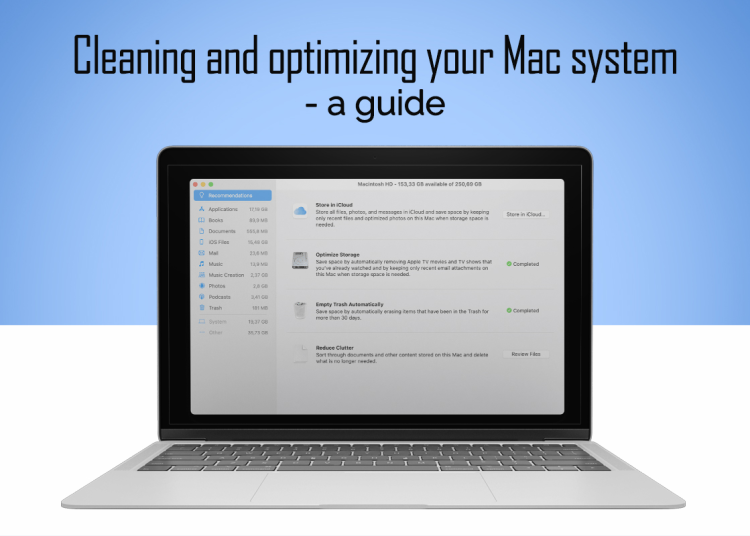Keeping your Mac system up and running will ensure faster completion of your tasks. It will enhance your productivity, and you don’t have to waste your time staring at a frozen screen or the dreaded spinning beach ball. If you want to clean and optimize your system automatically, you can install the best cleaner for Mac. Then, you can schedule scans and let the software do the work for you. Until you find a cleaner app that works for you, here’s a guide to quickly clean and optimize your Mac.
Update Your Software
Start tidying up your system by updating the software. First, install any security updates, patches, and application updates. It is critical to accept updates from Apple because they come with bug fixes and will maintain your system’s security. Also, your system will get all the latest enhancements and features. Moreover, your system will be streamlined after you have updated the software, and most problems you’ve been facing should be fixed.
Organize the Startup Items
If you have too many programs or apps starting up the moment you switch on your system, you need to organize them. First, you have to check the apps that automatically start and delete the ones you no longer need from the startup menu. Then, go to System Preferences > click Users & Accounts > select the Login tab to find the items starting automatically when you switch on your computer and running in the background.
Then, scroll through the items and delete the ones you don’t need. Finally, restart your system to let the changes take place.
Uninstall the Unused Applications
With time, your computer might become full of applications and programs you don’t need. You might not even remember all the applications you have installed on your system. These could be hogging system resources and making your system run slow. You have to uninstall the applications you no longer use by going to the App Store. You also need to clear the residual files, so they don’t take up additional space.
Check the Downloads Folder and Delete Files You Don’t Need
The downloads folder is where you might store large files without your knowledge. You may even find duplicate files that are burdening your hard drive space. You need to check this folder and get rid of all the files and attachments you don’t need so that your hard drive can breathe.
When you delete files from this folder, remember to clear the Trash. If deleted files and programs remain in the Trash, they will continue to take up space.
Clear Out the Cache
You can optimize your system by clearing out the cache. Whenever you visit a website, your system saves cache files, which can take up a lot of space. If you are using Safari and want to clear cache, you need to open the web browser and click Preferences. Then, click the Privacy tab and click the Remove All Website Data option. Finally, confirm your selection by clicking on Remove Now.
Similarly, you can clear your browsing history by removing cookies. So, the next time you visit a website, it might take a bit longer for the web page to load, but your system will have more storage space.
Organize Your System’s Desktop
If you have a cluttered desktop, it can decrease your productivity. Instead, you can utilize the built-in Stacks feature to arrange the items on the desktop onto a structured grid. For example, you can stack all the files of the same type onto one another in piles so that your desktop is clutter-free and you can easily find the files and folders you need.
On your desktop, you need to tap with two fingers and then click Use Stacks. Then, you can drag and drop the files by creating folders.
Delete Old iOS Backups
Backups are great, but they can take up a lot of space. If your system is filled with old iOS backups, you must remove them. You might not need all those backups anymore, so it is a good idea to delete them so you can create space for new backups.
In the Apple menu, select About This Mac and navigate to Storage. Then, click Manage > click on the iOS files option in the left tab > click Delete Backups.
Tidy up the Storage Disk
Check and fix your storage disk to optimize your system. Click Choose Applications > click Utilities > click Disk Utility > select your storage drive and click Verify Disk > if you see any errors, click Repair Disk.
You can go through the files on your storage disk and if you don’t need any of those files, remove them.
The Bottom Line
These are some great ways to clean and optimize your Mac system. By following these tips, you can enhance the efficiency and speed of your system.



























































